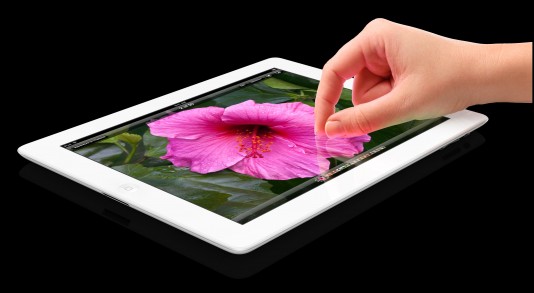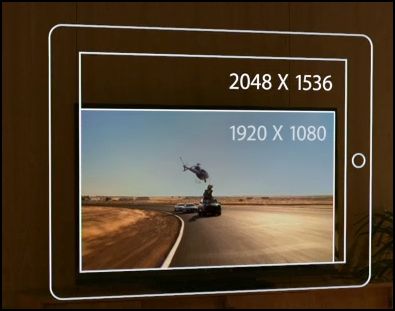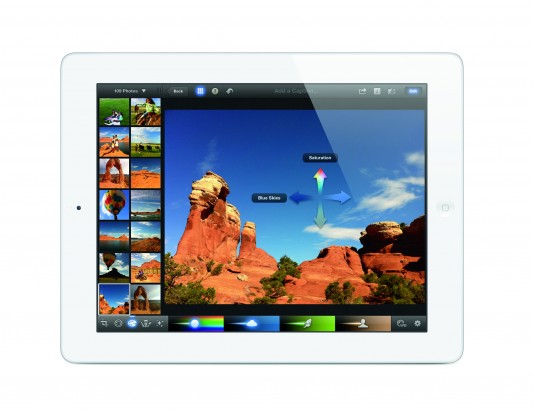Nobody has yet come close to competing with Apple in tablets; this new model extends the lead.
Apple today maintained its lead in tablet computing by introducing a next-generation iPad that sports a high-density display, a 5 megapixel camera, a new CPU, and support for new 4G LTE networks. Prices start at $499 for a WiFi-only, 16GB model.
The iPad—which Apple is not calling iPad 3—will retail for the same prices as the iPad 2. The iPad 2 will stay on the market with the entry-level WiFi-only, 16GB model selling for $399, $100 lower than it was yesterday.

Apple refers to the display as the “Retina Display,” which was first introduced on the iPhone 4. It is a marketing name for a capacitive touchscreen with a pixel density of 326 pixels per inch, making each pixel 78 micrometers in width. Apple calls it a Retina Display based on the assertion that a display of approximately 300 pixels per inch at a distance of 12 inches from the eye is the maximum amount of detail that the human retina can perceive. Some critics have disputed the claim, chalking it up as one more example of reality distortion by the late Steve Jobs. But optics expert Phil Plait, whose career includes collaboration with NASA on the camera in the Hubble Space Telescope, says that unless a person has vision better than 20/20 the claim is just fine. For the new iPad, the pixel density (3.1 million) exceeds that of a 1080p high-definition television by more than 1 million pixels. For the average user, it means watching HD movies at full resolution. (For a comparison of reading text on an iPad 2 and a new iPad, see this image from TechCrunch.)

Apple says the new A5X quad-core CPU with graphics in the iPad doubles performance over the previous generation chip used in iPad 2. The A5X is designed by Apple and manufactured by Samsung as a low-power system-on-a-chip specifically for the iPad.
The 5 megapixel camera offers backside illumination for low-light conditions. A new video image stabilization feature is designed to remove the bumps and shakes typically seen when filming with a hand-held device.
Apple added 4G LTE to the list of wireless networks it supports, for both AT&T and Verizon in the US, making it possible for CDMA and GSM iPad users to roam internationally. The Personal Hotspot feature allows the iPad to share a network connection with up to five other devices using Wi-Fi, Bluetooth or USB.
Software advances in the new iPad include a redesigned Camera app with video stabilization technology; the ability to delete photos from Photo Stream; support for dictation in English, French, German and Japanese; and a new dictation feature. The new iPad supports iCloud, the set of software services first introduced for the iPhone, and it is introducing an iPad version of iPhoto, popular on the Mac as part of the iLife suite. Other iLife apps iMovie and GarageBand, found in previous iPad versions, are upgraded. The iWork suite (Pages, Keynote, Numbers) have been upgraded to support Retina Display.

The new iPad Wi-Fi models will be available in black or white on Friday, March 16 for a suggested retail price of $499 (US) for the 16GB model, $599 (US) for the 32GB model and $699 (US) for the 64GB model. iPad Wi-Fi + 4G for either AT&T or Verizon will be available for a suggested retail price of $629 (US) for the 16GB model, $729 (US) for the 32GB model and $829 (US) for the 64GB model. Initial availability will be in the US, Canada, Australia, France, Germany, Hong Kong, Japan, Puerto Rico, Singapore, Switzerland, UK, and the US Virgin Islands. Apple is now accepting pre-orders.





